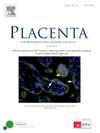In vitro differentiation of macaque extravillous trophoblasts in a low oxygen environment
IF 3
2区 医学
Q2 DEVELOPMENTAL BIOLOGY
引用次数: 0
Abstract
Introduction
Early primate placental development occurs within a low oxygen (O2) environment, whereas in vitro differentiation of trophoblasts is performed at supraphysiologic O2 levels. Macaque trophoblast stem cells (TSCs) are capable of differentiation to extravillous trophoblasts (EVTs) in vitro, yet the morphological heterogeneity observed across cells lines necessitates evaluation of optimal culture conditions. Our objectives were to determine the impact of oxygen on the in vitro differentiation of macaque TSCs and to refine the molecular characterization of TSC-differentiated EVTs.
Methods
Macaque TSCs were differentiated to EVTs in either 20% or 5% O2. Gene and protein expression profiles were compared between TSCs and EVTs and between differentiation conditions. Immunohistochemical analysis was performed on early gestation macaque placental tissues to assess in vivo expression of Ki-67, NCAM1 and monkey chorionic gonadotropin (mCG).
Results
EVTs differentiated in 20% O2 had significantly higher expression of CGA, CGB and NOTCH2 and decreased HIF1A expression compared to those cultured in 5% O2. Regardless of oxygen condition, nearly all EVTs expressed NCAM1 and Mamu-AG, the macaque-specific homolog of human EVT marker HLA-G. In vivo placental expression of NCAM1 was restricted to EVTs within the trophoblastic shell and endovasculature, revealing a macaque EVT marker within the placenta.
Discussion
Reduced oxygen minimally impacted macaque EVT differentiation in vitro. Elevated expression of the endovascular EVT marker NOTCH2 potentially suggests that 20% O2 supported differentiation of more mature EVTs. Altogether, a standard 20% O2 environment supports macaque EVT differentiation in vitro and the results further validate the identity of macaque TSC-differentiated EVTs.

猕猴低氧环境下外滋养细胞的体外分化
早期灵长类动物胎盘发育发生在低氧(O2)环境中,而滋养细胞的体外分化是在超生理氧水平下进行的。猕猴滋养细胞干细胞(TSCs)能够在体外分化为外胚层滋养细胞(EVTs),但在不同细胞系之间观察到的形态异质性需要对最佳培养条件进行评估。我们的目的是确定氧气对猕猴TSCs体外分化的影响,并完善tsc分化evt的分子特征。方法将猕猴TSCs在20%或5% O2条件下分化为evt。比较TSCs和evt之间以及不同分化条件下的基因和蛋白表达谱。采用免疫组化方法检测妊娠早期猕猴胎盘组织中Ki-67、NCAM1和绒毛膜促性腺激素(mCG)的体内表达。结果与5% O2培养组相比,20% O2培养组CGA、CGB和NOTCH2表达显著升高,HIF1A表达显著降低。无论氧条件如何,几乎所有EVT都表达NCAM1和Mamu-AG,这是人类EVT标志物HLA-G的猕猴特异性同源物。在体内,NCAM1的胎盘表达仅限于滋养层外壳和血管内EVT,揭示了猕猴胎盘内EVT的标记。缺氧对猕猴体外EVT分化的影响最小。血管内EVT标志物NOTCH2的表达升高可能表明20%的氧气支持更成熟的EVT分化。总之,标准的20% O2环境支持猕猴体外EVT分化,结果进一步验证了猕猴tsc分化EVT的身份。
本文章由计算机程序翻译,如有差异,请以英文原文为准。
求助全文
约1分钟内获得全文
求助全文
来源期刊

Placenta
医学-发育生物学
CiteScore
6.30
自引率
10.50%
发文量
391
审稿时长
78 days
期刊介绍:
Placenta publishes high-quality original articles and invited topical reviews on all aspects of human and animal placentation, and the interactions between the mother, the placenta and fetal development. Topics covered include evolution, development, genetics and epigenetics, stem cells, metabolism, transport, immunology, pathology, pharmacology, cell and molecular biology, and developmental programming. The Editors welcome studies on implantation and the endometrium, comparative placentation, the uterine and umbilical circulations, the relationship between fetal and placental development, clinical aspects of altered placental development or function, the placental membranes, the influence of paternal factors on placental development or function, and the assessment of biomarkers of placental disorders.
 求助内容:
求助内容: 应助结果提醒方式:
应助结果提醒方式:


